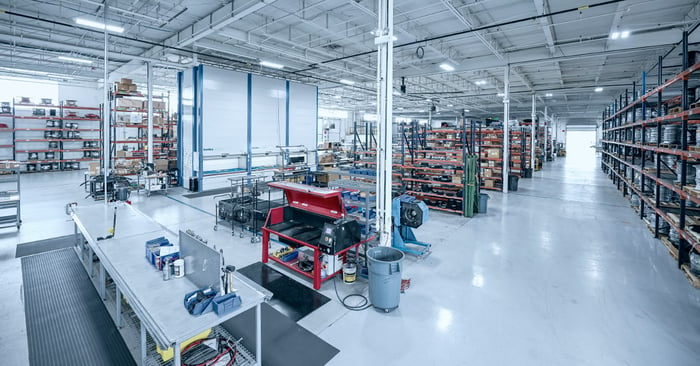Inventory management plays a crucial role in the success of any business. Efficiently managing inventory can significantly impact a company's profitability, customer satisfaction, and overall supply chain operations. Two common inventory management strategies are Just-in-Time (JIT) and Just-in-Case (JIC) – but which one should you use? In this blog post, we will delve into what these strategies are, why you might choose one over the other, and how Automated Storage and Retrieval Systems (ASRS) can support these inventory management approaches.
What is Just-in-Time (JIT) Inventory Management
Just-in-Time is an inventory management strategy that focuses on minimizing inventory levels by receiving and producing goods just in time to meet customer demand. The objective is to reduce waste, carrying costs, and the risk of inventory obsolescence. JIT relies on close coordination between suppliers, manufacturers, and retailers to ensure a seamless flow of goods through the supply chain. By receiving goods exactly when they are needed, companies can minimize inventory holding costs and optimize cash flow.
What is Just-in-Case (JIC) Inventory Management
Just-in-Case inventory management takes a more cautious approach by stockpiling inventory to ensure readiness for unexpected fluctuations in demand or supply chain disruptions. The focus of this strategy is on having a safety buffer to mitigate potential risks, such as supplier delays, quality issues, or sudden increases in customer demand. JIC helps companies ensure continuity of operations and customer satisfaction by minimizing stockouts and avoiding lost sales opportunities.
Just-in-Time vs Just-in-Case – what’s the difference?
The Just-in-Time inventory management strategy is generally more common and widely adopted compared to the Just-in-Case inventory management strategy. JIT gained popularity in the manufacturing industry, particularly with the introduction of Lean Manufacturing principles and practices in the 1970’s. Many companies have embraced JIT to minimize inventory carrying costs, reduce waste, improve efficiency, and respond to customer demand more effectively.
JIC is counterpoint strategy that addresses the limitations and potential risks of JIT, which primarily focuses on minimizing inventory levels. JIC is more commonly used in industries where disruptions in the supply chain, long lead times, or unpredictable demand patterns are common. Additionally, many organizations use JIC as a complimentary strategy alongside JIT to provide a safety net to mitigate risks and ensures continuity of operations during unexpected events.
Just-in-Time vs Just-in-Case - which is best for your warehouse?
Reasons warehouse may choose JIT
- With lower inventory levels, less space is required for storage - freeing up valuable real estate (and capital!)
- JIT reduces the risk of holding excess inventory that could become obsolete or spoil over time
- By aligning production with customer demand companies can respond quickly to market fluctuations leading to improved customer satisfaction
Reasons warehouses may choose JIC
- Reduced risk of stockouts due to uncertainties in the supply chain such as transportation disruptions, natural disasters, or unexpected spikes in demand
- Encourages purchasing larger quantities of inventory, leading to potential bulk cost savings
- Ensures availability of products with long lead times or those with seasonal demand fluctuations
ASRS with JIT/JIC Inventory Management:
ASRS is a technology-driven solution that enhances both JIT and JIC inventory management strategies. These systems utilize robotics, software controls, and vertical space optimization to automate the storage and retrieval of goods within a warehouse. ASRS offers several benefits that support efficient inventory management:
- Space Optimization: ASRS maximizes the utilization of vertical space, allowing warehouses to store more inventory in a smaller footprint. This feature is especially advantageous for a JIC strategy as it reduces the need for extensive warehouse space.
- Inventory Accuracy: ASRS uses advanced tracking and management systems to maintain accurate real-time inventory data. This precision helps warehouse managers ensure stock levels are optimized, preventing overstocking or stockouts, regardless of the chosen strategy.
- Order Fulfillment Speed: ASRS accelerates the order fulfillment process by automating the retrieval and picking of goods. This efficiency is beneficial for a JIT strategy as it enables faster movement of inventory through the warehouse.
- Flexibility and Adaptability: ASRS systems are highly configurable, allowing warehouse managers to adapt to changing business requirements. Whether it's scaling up production for JIT or expanding storage capacity for JIC, ASRS is adaptable.
While JIT is more widely known and implemented, it is important to note that the appropriateness of each strategy depends on the specific business, industry, and market conditions. Most companies adopt a hybrid approach, incorporating elements of both JIT and JIC to strike the right balance between inventory optimization and risk mitigation.





